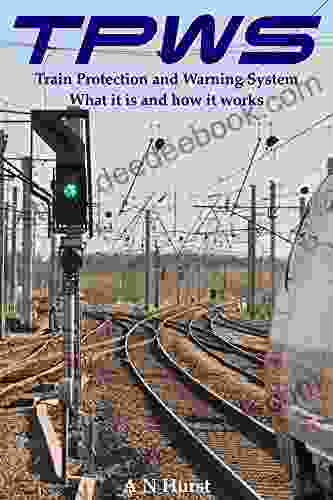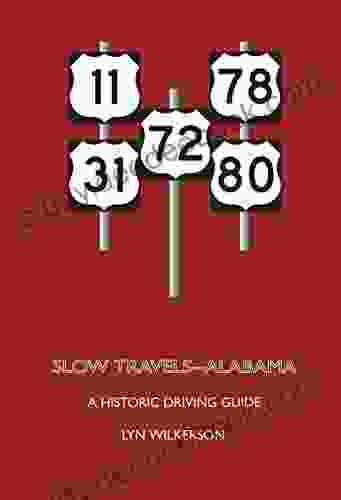TPWS: Train Protection and Warning System - A Comprehensive Guide

The Train Protection and Warning System (TPWS) is a crucial safety system implemented on railways to prevent train accidents and enhance the overall safety of railway operations. It plays a vital role in protecting passengers, railway personnel, and infrastructure by providing warnings and interventions in various scenarios.
4.5 out of 5
| Language | : | English |
| File size | : | 1813 KB |
| Text-to-Speech | : | Enabled |
| Enhanced typesetting | : | Enabled |
| Print length | : | 54 pages |
| Lending | : | Enabled |
| Screen Reader | : | Supported |
Components of TPWS
TPWS comprises several key components that work together to detect and respond to potential hazards:
1. Trackside Infrastructure
* Balise Transponders: Small electronic devices placed along the track that transmit data to passing trains. * Eurobalises: A variant of balise transponders that provide more advanced data and functionalities. * Track Circuits: Electrical circuits used to detect the presence and position of trains on the track.
2. On-Board Equipment
* TPWS Receiver: Receives and interprets data from trackside balises and track circuits. * Speedometer: Measures the train's speed and provides inputs to the TPWS receiver. * Warning Devices: Audible and visual alarms that alert the train driver of potential hazards. * Brake Control System: Actuates the train's brakes when instructed by the TPWS receiver.
Functionality of TPWS
TPWS operates by continuously monitoring train speed and comparing it with safe limits determined by trackside infrastructure. It provides warnings and initiates braking interventions based on predefined parameters:
1. Warning Mode
* When the train exceeds a predetermined speed limit, TPWS activates the warning devices to alert the driver of the approaching hazard. * The driver is expected to respond by acknowledging the warning and reducing the train's speed.
2. Service Brake Intervention
* If the driver fails to respond to the warning within a specified time, TPWS initiates a service brake intervention. * The train's brakes are applied gradually to slow it down.
3. Emergency Brake Intervention
* In critical situations, such as a red signal being passed or excessive speed, TPWS triggers an emergency brake intervention. * The train's brakes are applied with maximum force to bring it to a stop as quickly as possible.
Benefits of TPWS
The implementation of TPWS offers numerous benefits for railway operations and safety:
* Accident Prevention: TPWS helps to prevent train accidents by providing warnings and automatically intervening when necessary. * Enhanced Safety: It improves the overall safety of railway operations by reducing the risk of collisions, derailments, and other incidents. * Increased Capacity: By allowing trains to operate closer together while maintaining safety, TPWS enables increased railway capacity. * Driver Assistance: TPWS provides additional assistance to train drivers, reducing their workload and minimizing distractions. * Improved Reliability: TPWS enhances the reliability of railway services by predicting potential hazards and taking proactive measures.
Implementation and Challenges
The implementation of TPWS involves significant investment and collaboration between various stakeholders:
* Railway Infrastructure Managers: Responsible for installing and maintaining the trackside infrastructure. * Train Operating Companies: Equip locomotives with on-board TPWS receivers and integrate them with braking systems. * Regulatory Authorities: Establish standards and oversee the implementation and operation of TPWS.
Challenges faced in TPWS implementation include:
* Cost: The installation and maintenance of TPWS infrastructure and on-board equipment can be expensive. * Compatibility: Interoperability between different TPWS systems can be an issue when multiple operators share the same track. * Human Factors: Ensuring that train drivers are properly trained and adhere to TPWS procedures is crucial.
The Train Protection and Warning System (TPWS) is a vital safety technology that plays a significant role in preventing train accidents and enhancing railway safety. By providing timely warnings and intervening in critical situations, TPWS helps protect passengers, railway personnel, and infrastructure. Its implementation requires close collaboration between railway infrastructure managers, train operating companies, and regulatory authorities. With ongoing advancements in technology, TPWS is expected to continue evolving, further improving the safety and efficiency of railway operations.
4.5 out of 5
| Language | : | English |
| File size | : | 1813 KB |
| Text-to-Speech | : | Enabled |
| Enhanced typesetting | : | Enabled |
| Print length | : | 54 pages |
| Lending | : | Enabled |
| Screen Reader | : | Supported |
Do you want to contribute by writing guest posts on this blog?
Please contact us and send us a resume of previous articles that you have written.
 Book
Book Novel
Novel Chapter
Chapter Text
Text Reader
Reader Paperback
Paperback E-book
E-book Magazine
Magazine Sentence
Sentence Bookmark
Bookmark Shelf
Shelf Glossary
Glossary Preface
Preface Footnote
Footnote Scroll
Scroll Codex
Codex Library card
Library card Narrative
Narrative Autobiography
Autobiography Memoir
Memoir Reference
Reference Encyclopedia
Encyclopedia Dictionary
Dictionary Thesaurus
Thesaurus Narrator
Narrator Resolution
Resolution Librarian
Librarian Card Catalog
Card Catalog Borrowing
Borrowing Stacks
Stacks Archives
Archives Study
Study Scholarly
Scholarly Reserve
Reserve Journals
Journals Reading Room
Reading Room Rare Books
Rare Books Special Collections
Special Collections Storytelling
Storytelling Theory
Theory Sharon St John
Sharon St John Gayle Wald
Gayle Wald David Miliband
David Miliband Karen Bojar
Karen Bojar Dan Dye
Dan Dye Vedran Deletis
Vedran Deletis Joshua T Fischer
Joshua T Fischer Deb Kastner
Deb Kastner Shohreh Ghasemi
Shohreh Ghasemi Wahida Clark
Wahida Clark Nikita
Nikita Sabine Durrant
Sabine Durrant Donna E Alvermann
Donna E Alvermann Ibi Zoboi
Ibi Zoboi Robin Cook
Robin Cook Jack Kassewitz
Jack Kassewitz Mike Brewer
Mike Brewer Kathy Brown
Kathy Brown Rada Jones Md
Rada Jones Md Richard Carman
Richard Carman
Light bulbAdvertise smarter! Our strategic ad space ensures maximum exposure. Reserve your spot today!
 Dwight BlairFollow ·5.2k
Dwight BlairFollow ·5.2k Rex HayesFollow ·13k
Rex HayesFollow ·13k Larry ReedFollow ·18.6k
Larry ReedFollow ·18.6k Caleb CarterFollow ·4.8k
Caleb CarterFollow ·4.8k Hunter MitchellFollow ·18.1k
Hunter MitchellFollow ·18.1k Brenton CoxFollow ·15.9k
Brenton CoxFollow ·15.9k Jeremy CookFollow ·8.3k
Jeremy CookFollow ·8.3k Thomas PynchonFollow ·9.4k
Thomas PynchonFollow ·9.4k

 Dominic Simmons
Dominic SimmonsIcky Island: An Unforgettable Adventure for Kids!
Introducing Icky Island: A Delightful One...

 Carlos Fuentes
Carlos FuentesThe Midnight Breed: Embracing the Shadows and Unlocking a...
Welcome to the captivating world of...

 Ike Bell
Ike BellTwelve Steps Toward Political Revelation: A Path to...
Politics, often perceived as a complex and...

 Cameron Reed
Cameron ReedTravels in Arizona Goldfield: Unraveling the Threads of...
Nestled amidst the rugged...

 John Grisham
John GrishamFlashpoints of Cinema History and Queer Politics:...
The relationship between cinema history and...
4.5 out of 5
| Language | : | English |
| File size | : | 1813 KB |
| Text-to-Speech | : | Enabled |
| Enhanced typesetting | : | Enabled |
| Print length | : | 54 pages |
| Lending | : | Enabled |
| Screen Reader | : | Supported |














